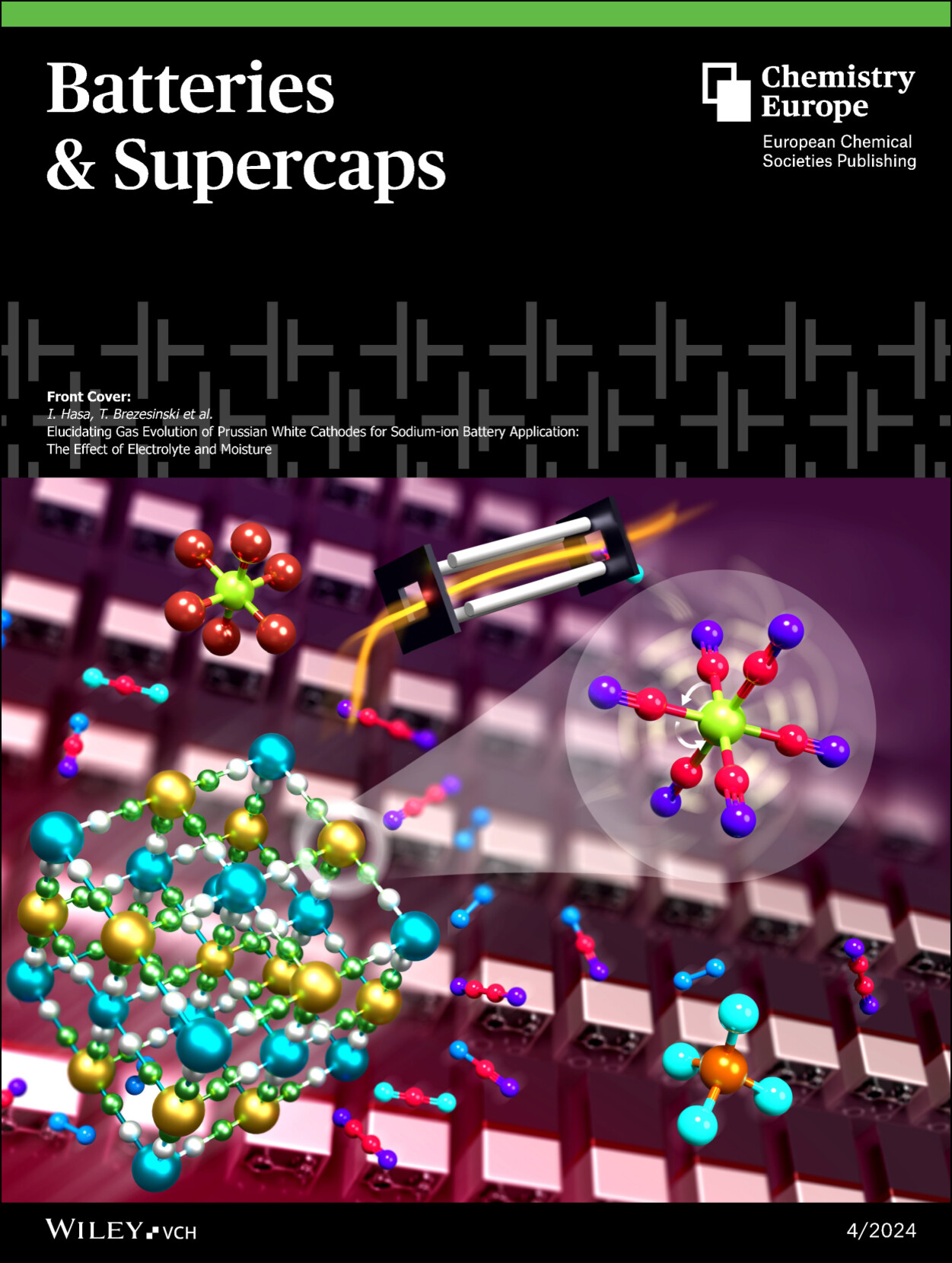Mitigating Dissolution to Enhance the Performance of Pillar[5]quinone in Sodium Batteries
IF 5.1
4区 材料科学
Q2 ELECTROCHEMISTRY
引用次数: 0
Abstract
Sodium‐ion batteries using organic electrode materials are a promising alternative to state‐of‐the‐art lithium‐ion batteries. However, their practical viability is hindered by challenges such as a low specific capacity of the organic electrode materials, or their dissolution in the electrolyte. We herein present a double mitigation strategy to enhance the performance of pillar[5]quinone (P5Q) as positive electrode in sodium batteries. Using 5 M sodium bis(fluorosulfonyl)imide in succinonitrile as highly concentrated electrolyte, and encapsulating P5Q in CMK‐3 (Carbon Mesostructured by KAIST with hexagonally ordered rod‐like carbon domains) as templated ordered mesoporous carbon, we achieve a record cycling performance with improved cycling stability even at elevated temperature (40 °C). The P5Q@CMK‐3 composite electrode delivers 430 mAh g−1 specific discharge capacity at 0.2C rate with 90% retention over 200 cycles. This corresponds to an energy density of 831 Wh kg−1 (based on P5Q mass) and surpasses previous reports on pillarquinones. When operated at 40 °C, the P5Q@CMK‐3 composite electrodes deliver a specific discharge capacity of 438 mAh g−1 with 88% capacity retention over 500 cycles (0.02% per cycle). This study underscores the crucial role the electrolyte plays in advancing organic sodium batteries, offering a promising avenue for the future of sustainable energy technologies.减轻溶解以提高钠电池中柱状[5]醌的性能
使用有机电极材料的钠离子电池有望替代最先进的锂离子电池。然而,有机电极材料的低比容量或在电解液中的溶解等难题阻碍了其实际可行性。我们在此提出一种双重缓解策略,以提高钠电池中作为正极的柱[5]醌(P5Q)的性能。我们使用琥珀腈中的 5 M 双(氟磺酰)亚胺钠作为高浓度电解液,并将 P5Q 包封在 CMK-3(由 KAIST 提供的具有六角有序棒状碳域的介质结构碳)作为模板有序介孔碳中,从而实现了创纪录的循环性能,即使在高温(40 °C)下也能提高循环稳定性。P5Q@CMK-3 复合电极在 0.2C 速率下的比放电容量为 430 mAh g-1,在 200 次循环中的保持率为 90%。这相当于 831 Wh kg-1 的能量密度(基于 P5Q 质量),超过了之前有关柱醌的报道。在 40 °C 下工作时,P5Q@CMK-3 复合电极的比放电容量为 438 mAh g-1,在 500 次循环中容量保持率为 88%(每次循环 0.02%)。这项研究强调了电解质在推动有机钠电池发展中的关键作用,为未来的可持续能源技术提供了一条前景广阔的途径。
本文章由计算机程序翻译,如有差异,请以英文原文为准。
求助全文
约1分钟内获得全文
求助全文
来源期刊

Batteries & Supercaps
Multiple-
CiteScore
8.60
自引率
5.30%
发文量
223
期刊介绍:
Electrochemical energy storage devices play a transformative role in our societies. They have allowed the emergence of portable electronics devices, have triggered the resurgence of electric transportation and constitute key components in smart power grids. Batteries & Supercaps publishes international high-impact experimental and theoretical research on the fundamentals and applications of electrochemical energy storage. We support the scientific community to advance energy efficiency and sustainability.
 求助内容:
求助内容: 应助结果提醒方式:
应助结果提醒方式:


